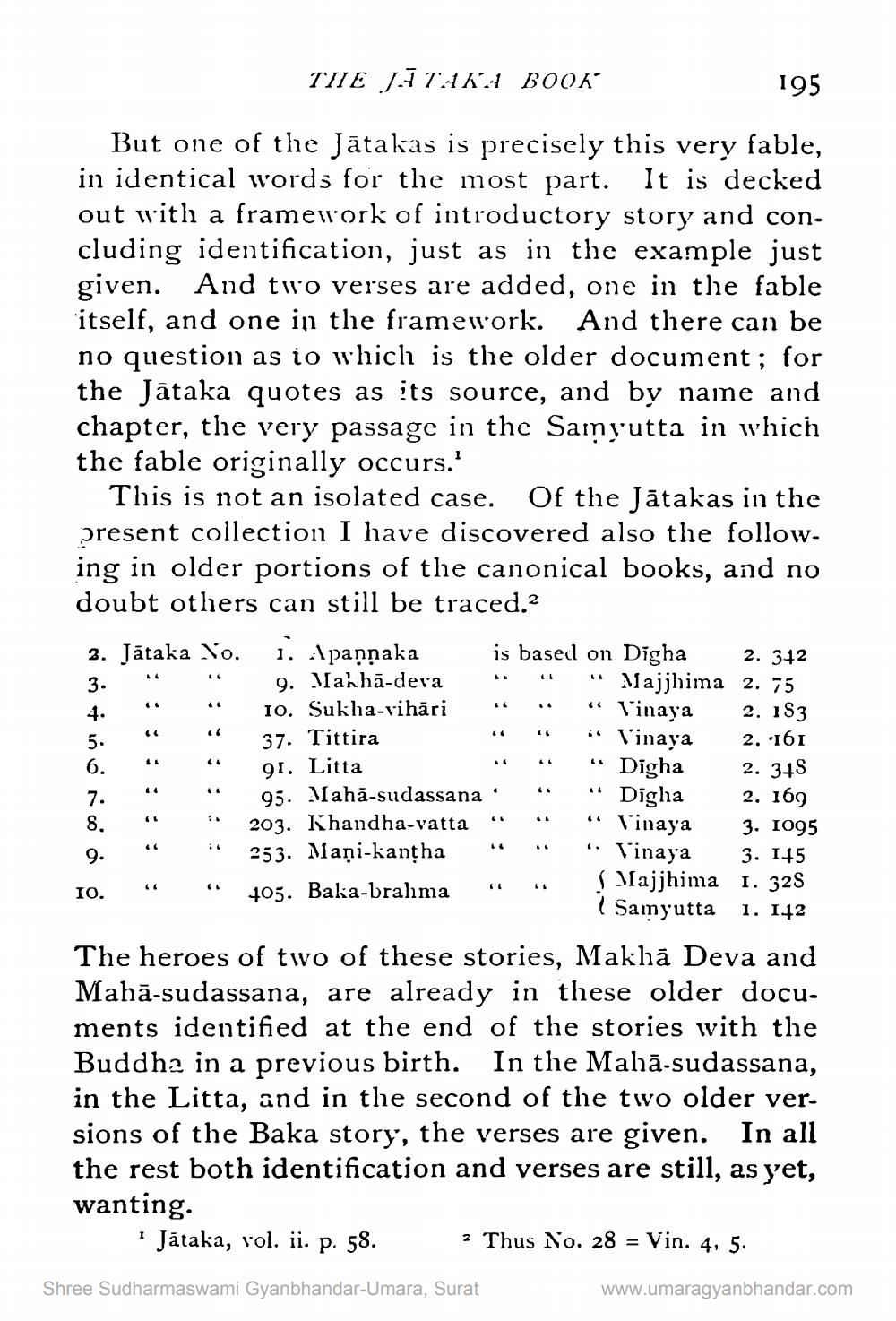________________
THE JÄTAKA BOOK
195
But one of the Jatakas is precisely this very fable, in identical words for the most part. It is decked out with a framework of introductory story and concluding identification, just as in the example just given. And two verses are added, one in the fable itself, and one in the framework. And there can be no question as to which is the older document; for the Jātaka quotes as its source, and by name and chapter, the very passage in the Samyutta in which the fable originally occurs.'
This is not an isolated case. Of the Jātakas in the present collection I have discovered also the following in older portions of the canonical books, and no doubt others can still be traced.2
3. Jātaka No.
3.
4.
5.
6.
7.
8.
9.
IO.
""
""
"6
"+
I
64
""
1. Apannaka
9. Makha-deva
10. Sukha-vihāri
37. Tittira
91. Litta
95. Maha-sudassana 203. Khandha-vatta 253. Mani-kanṭha
405. Baka-brahma
Jataka, vol. ii. p. 58.
Shree Sudharmaswami Gyanbhandar-Umara, Surat
is based on Digha
L
2. 342
Majjhima 2. 75 Vinaya
2. 183
Vinaya
2. 161
Digha
2. 348
Digha
2. 169
Vinaya
3. 1095
3. 145
Vinaya ( Majjhima I. 32S (Samyutta
1. 142
46
66
LL
44
The heroes of two of these stories, Makha Deva and Mahā-sudassana, are already in these older documents identified at the end of the stories with the Buddha in a previous birth. In the Maha-sudassana, in the Litta, and in the second of the two older versions of the Baka story, the verses are given. In all the rest both identification and verses are still, as yet, wanting.
44
2 Thus No. 28 Vin. 4, 5.
www.umaragyanbhandar.com




